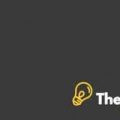JC Penny Company Case Study Solution
Performance Evaluation:
Qualitative Analysis:
The performance of JC Penny Company is very poor from the financial years 2010 to 2012. Both the qualitative and quantitative aspects appears to be poor, it can be said that there are many factors which leads to the poor performance of the company. The policies and strategies of the management fails to increase the wealth of shareholders and the level of profitability is also decreased due to the poor economic conditions of the region, great economic recession is the primary reason which leads to the poor performance of all the companies. Many industries are suffering due to the recession, however, it can be said that the economy is now in the phase of recovery and the profits of many companies are increasing day by day but this is not the case for JC Penny.
By analyzing the recent performance and strategies it can be said with certainty that the strategies and actions of the senior management are the primary reasons which leads to the disastrous results. There are many situation and instances where the right policies can increase the profitability of the company. Ullman played a significant role in the good performance of JC Penny in 2010 and 2011 but he step down as CEO, the senior management should have to force him not to leave the position, had Ullman was in his position in 2012, the results might be quite different. On the other hand, the newly implemented pricing strategy also appears to be ineffective and fails to improve the financial and operational performance of the company.
Quantitative Analysis:
The quantitative performance of JC Penny is also seems to be worst, all the ratios and trends are declining from the previous years which indicates that JC Penny is facing quite difficult trading conditions. The liquidity ratios are declining in 2012 as compare to 2010, the ideal current and quick ratio for any company should be almost 2:1 and 1:1. Both these ratios of JC Penny are very low as compare to the pre-described threshold. The poor liquidity position also enhance the claims of several equity analyst which have predicted that JC Penny is facing very poor liquidity conditions.
JC Penny Company Harvard Case Solution & Analysis
On the other hand, the profitability position also appears to be poor, all the profitability ratios are positive in the year 2010 and by the end of 2012, the profitability ratios becomes negative except for the gross profit margin which is also decrease by a healthy rate. The decrease in gross margin could be due to the increased direct costs, although the management have terminates 10% of the workforce but the gross profit margin is still declining which can be very dangerous for the company. In addition to this, the net profit margins are also decreasing drastically, poor economic conditions can be main reason of this, but excessive remuneration of executive management can also be another factor which leads to the negative profitability.
Inventory and accounts payable turnover days seems to be positive, the inventory turnover days is reducing which can be favorable for the company as the company will not have to bear high holding costs. The decrease in the inventory days could be due to the new pricing strategy which give substantial discounts to the customers. The accounts payable days are reducing which can have either favorable or adverse consequences on the JC Penny, higher payable days allow company to use the cash in order to pursue the growth strategies. On the other hand, the company will also fails to take advantage from early payment discounts because of high payable days.
Statement of Sources and Uses:
In order to maintain ending cash balance of $1 billion, JC Penny will have to raise almost $560 million of cash from external sources and the company will also not have to repay any long-term liability in the year 2013. Furthermore, the company will also have to reduce net working capital and other assets by 10% and 5%. In addition to this, the company will also not have to pay any stock compensation and dividends in order to maintain the ending cash balance of $1 billion.
Static Trade-off Framework:
Static trade-off theory identify the ideal capital structure of the firm which leads to the minimal WACC and highest value of the company. It can be said that debt is cheaper source of finance because of the lower risk of the debt providers and availability of tax relief on the interest payments. However, the benefits which debt finance gives to the company will be totally off-set by the cost of financial distress. Cost of financial distress normally includes additional return of equity investors and cost of resolving the disputes between common stockholders, management and debt providers, it further includes additional return of debt providers because their risk will also increase because of the high leverage ratio of the company...................
This is just a sample partial case solution. Please place the order on the website to order your own originally done case solution.












